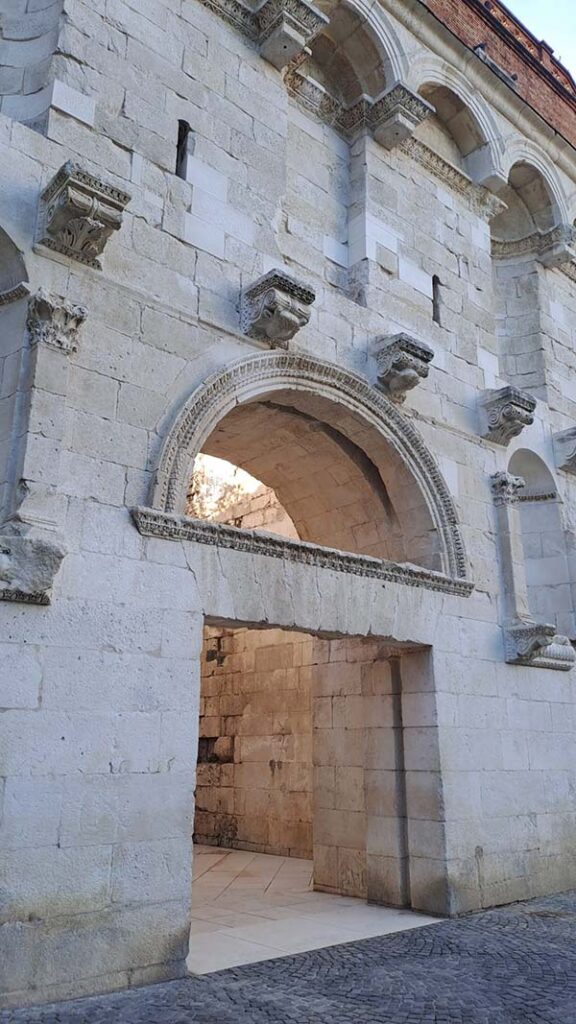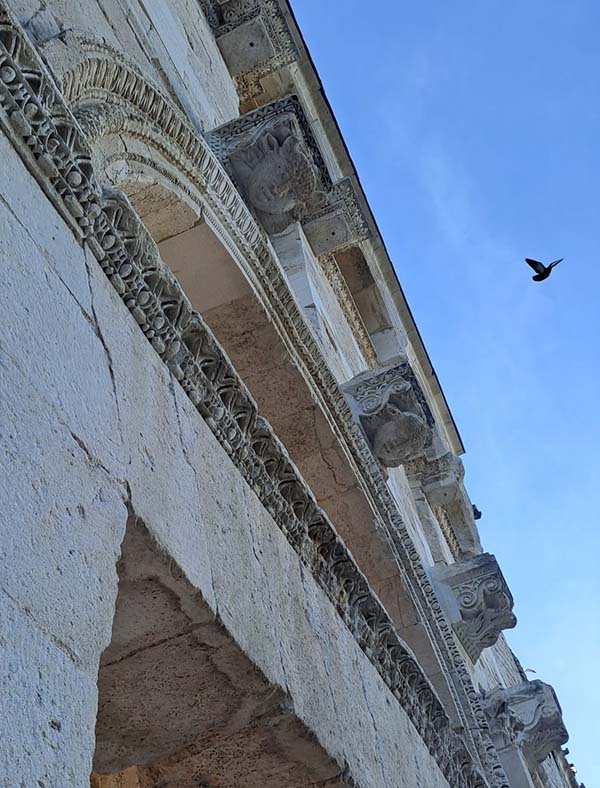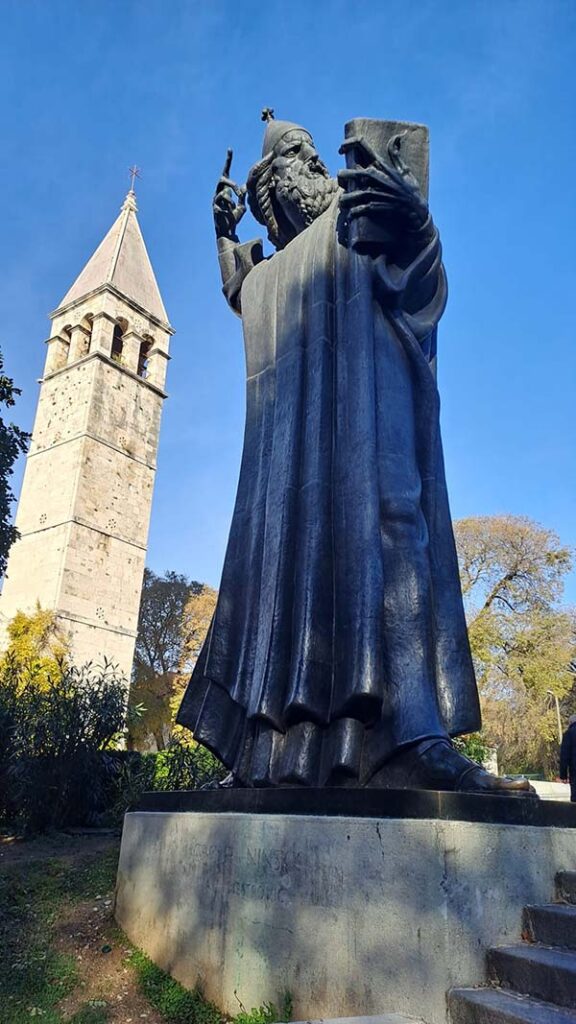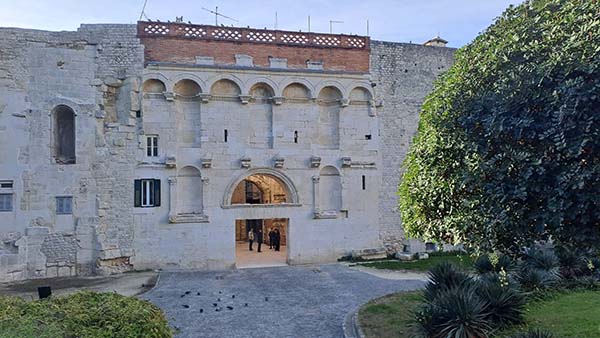As the main entrance to Diocletian’s Palace, the Golden Gate was the largest and most decorated of the four palace entrances. It is often a source of confusion, since many tourists believe the Golden Gate is actually made of gold. Similar to the Golden Gate Bridge in San Francisco, the name has nothing to do with actual gold. It was given its name much later in Split’s history, simply to show its significance. The other three gates of the palace were named Silver, Iron, and Bronze Gate, according to their size and order of importance.

The Golden Gate was designed to be the most representative gate of the palace. A visitor in ancient times would have known that they had arrived to meet one of the most important people in the Roman Empire. The gate was flanked by two octagonal towers for defense, and the outside gate was a portcullis raised and lowered by guards in the upper corridor of the wall. Inside was a second gate, creating a gatehouse defense structure where enemies could get trapped in a small space.
The main decorations on the gate were the four niches where statues of Roman gods or emperors stood. In the center rectangle between the upper two niches was probably a flat relief of Rome’s most important deity, Jupiter. Statues also stood on top of the gate on the stone pedestals still protruding out of the brick wall. On the facade, pillars were placed to accentuate the grandeur of the gate, and the arches on consoles were lined with various decorative astragals.

Two curious pieces of decoration are the two faces just above the entrance, known as Felicitas Saeculi. Combining the head of a bull and a human face, they symbolized the happiness and prosperity of Emperor Diocletian’s rule. The entrance is slightly shorter today since much ground was built up throughout the years. The original floor level still sits about 1.5-2 meters below the ground.

In front of the gate is one of Split’s most recognizable monuments today. The large 8-meter tall statue of Croatian bishop Grgur Ninski (Gregory of Nin) is considered one of the finest works of Croatian sculptor Ivan Meštrović. The bishop Gregory, who lived in the 10th century, was one of the earliest advocates for the use of the local Croatian language in the church. In Croatia, he is often seen as a symbol of Croatian language and culture.
The most famous part of the statue is the bishop’s big toe. It is considered good luck to rub it, which is why the toe is a different color from the rest of the statue. Since so many people keep rubbing the toe, it brings out the original color of the bronze, while the other parts have oxidized and have been painted over with a layer of protective patina. When visiting Split, don’t forget to give the big toe a little rub. It is often said that rubbing the toe means that one day you will return to Split!

